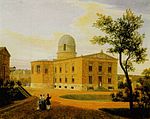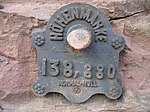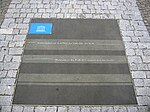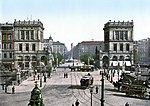Jewish Museum Berlin

The Jewish Museum Berlin (Jüdisches Museum Berlin) was opened in 2001 and is the largest Jewish museum in Europe. On 3,500 square metres (38,000 square feet) of floor space, the museum presents the history of Jews in Germany from the Middle Ages to the present day, with new focuses and new scenography. It consists of three buildings, two of which are new additions specifically built for the museum by architect Daniel Libeskind. German-Jewish history is documented in the collections, the library and the archive, and is reflected in the museum's program of events. From its opening in 2001 to December 2017, the museum had over eleven million visitors and is one of the most visited museums in Germany. Opposite the building ensemble, the W. Michael Blumenthal Academy of the Jewish Museum Berlin was built – also after a design by Libeskind – in 2011/2012 in the former flower market hall. The archives, library, museum education department, a lecture hall and the Diaspora Garden can all be found in the academy.
Excerpt from the Wikipedia article Jewish Museum Berlin (License: CC BY-SA 3.0, Authors, Images).Jewish Museum Berlin
Lindenstraße, Berlin Kreuzberg
Geographical coordinates (GPS) Address Phone number Website External links Nearby Places Show on map
Geographical coordinates (GPS)
| Latitude | Longitude |
|---|---|
| N 52.502 ° | E 13.395 ° |
Address
Jüdisches Museum
Lindenstraße 9-14
10969 Berlin, Kreuzberg
Germany
Open on Google Maps









